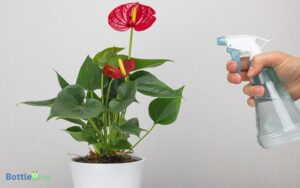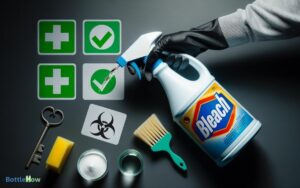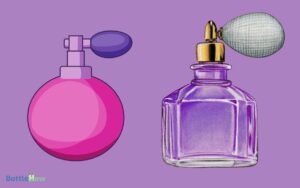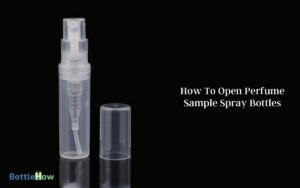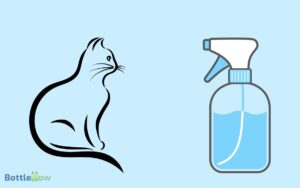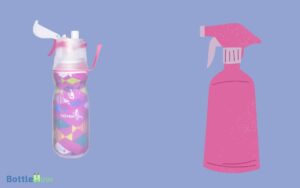Rain X Spray Vs Bottle: Which One Is Right For You!
When you’re deciding between Rain X spray and bottle formats for your vehicle, consider their specific advantages.
The spray allows for a fast, uniform application, making it easier to cover large areas quickly with less effort. It’s particularly beneficial for consistent film strength over your entire windshield and windows.
However, the bottled Rain X offers greater control, enabling precise application and typically lasts longer—up to six months compared to three for the spray.
Cost-wise, the spray might seem cheaper initially, but the bottle may prove more economical in the long run.
Each format performs better under different environmental conditions, influencing your choice further. Discover how each could optimize your visibility and driving safety.
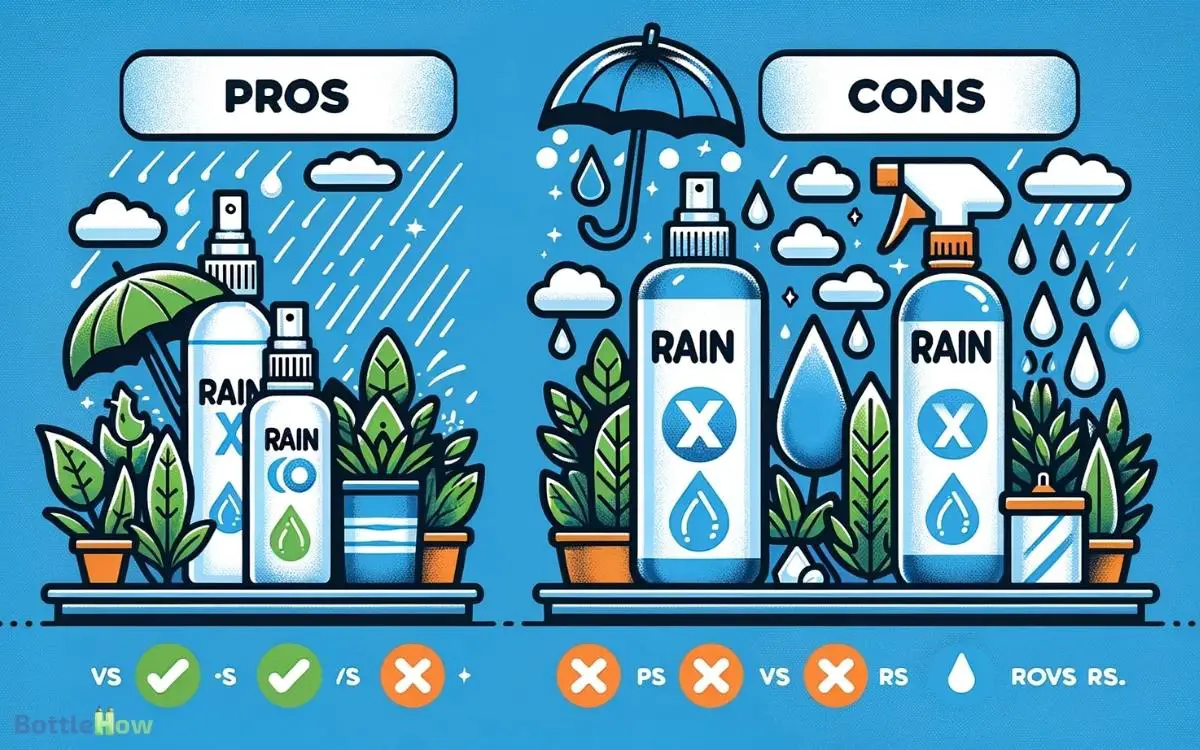
Comparison of Rain X Spray and Bottle: Features and Uses
| Aspect | Rain X Spray | Rain X Bottle |
|---|---|---|
| Purpose | Designed to improve visibility by repelling rain, sleet, and snow from windshields | Intended for the same purpose as the spray version, providing a hydrophobic coating to enhance water repellency on automotive glass surfaces |
| Application | Applied directly onto the windshield surface as a spray for quick and easy coating | Requires manual application using a microfiber cloth or applicator pad to ensure even coverage |
| Convenience | Offers convenient spray application for effortless coating, particularly suitable for quick touch-ups | Requires a bit more effort for application but provides more control over the coating process |
| Coverage | Provides broad coverage with a single spray, suitable for covering large windshield areas efficiently | Allows for precise application, especially for targeted areas or smaller surfaces requiring attention |
| Durability | Offers durable water repellency that can last for weeks or months, depending on driving conditions | Provides long-lasting protection against rain, snow, and other environmental elements when applied correctly |
| Portability | Compact and easy to carry, making it suitable for on-the-go use and quick applications | Requires a larger bottle for storage and may not be as convenient for carrying in vehicles or for travel |
| Application Time | Quick and efficient application, ideal for users seeking immediate results | Takes a bit longer to apply compared to the spray version, but offers more control over the coating process |
| Price | Prices may vary depending on the size of the spray bottle and the retailer, typically affordable | Prices may vary based on the size of the bottle and the quantity of product included, generally affordable for most consumers |
| Availability | Widely available at automotive stores, department stores, and online retailers | Available at automotive stores, hardware stores, and online marketplaces |
| Effectiveness | Provides effective water repellency, improving visibility and safety during inclement weather conditions | Offers reliable protection against water and environmental elements, maintaining windshield clarity and longevity |
Key Takeaways
Overview of Rain-X Products
Rain-X offers a range of automotive glass treatments designed to enhance visibility and safety by repelling water and reducing the adhesion of sleet, snow, and bugs.
You’ll find their water-repellent technology integral in optimizing your service to others, especially when ensuring the clear visibility essential for safe driving conditions.
The formulations, including silicon dioxide or hydrophobic polymers, create a molecular barrier that water droplets can’t penetrate.
This technology not only improves reaction times during adverse weather but also facilitates easier de-icing, contributing to fewer maintenance calls and more reliable service.
Comparative studies highlight Rain-X‘s superiority in durability and efficacy against competing brands, often showing significant reductions in visual impairments caused by weather elements. This advantage supports your commitment to safety and efficiency in service.
Application Methods Compared
When comparing the application methods of Rain-X in spray versus bottle formats, you’ll find distinct differences in ease of use and coverage quality.
The spray allows for a more uniform application, distributing the hydrophobic coating evenly across the glass surfaces, which is essential for best visibility and water repellency.
In contrast, the bottled liquid requires manual spreading, which can lead to uneven coverage if not applied meticulously.
Ease of Use
You’ll find that applying the spray version of the product requires less preparation and technique compared to the bottled formula, which demands a more meticulous, layered application.
Here’s a breakdown of the application processes for both:
Preparation Time:
The spray requires minimal setup—just a clean surface. Conversely, the bottled version often necessitates using a specific applicator pad.
Technique Sensitivity:
Spray application tolerates more variance in technique, making it more forgiving for the inexperienced user.
Application Speed:
Sprays can cover large areas quickly, reducing overall application time.
Re-application Ease:
The spray’s design allows for quick touch-ups without the need for extensive surface prep, unlike the bottled formula which might need a new base layer.
Coverage Quality
While importance of use is vital, it’s also essential to assess how the spray and bottle formats of Rain X differ in regards to coverage quality.
The spray format offers a mist application, uniformly distributing the hydrophobic coating over your vehicle’s windshield. This results in a thorough barrier against water and debris, reducing streaks and maintaining clarity.
Conversely, the bottle format requires manual application, typically with a cloth. This method can lead to uneven coverage, especially if you’re not meticulous. However, you might achieve a thicker layer, enhancing durability.
When serving clients, recommending the spray version often ensures more consistent results, fostering safer driving conditions through superior visibility.
Always ensure thorough application, regardless of the chosen format.
Duration of Effectiveness
Rain X Spray typically maintains its efficacy for about three months, whereas the bottled formula can extend this duration up to six months, depending on application conditions and frequency of windshield use.
Here’s a concise breakdown to help you understand the factors influencing these differences:
- Chemical Composition: The bottled formula has a more concentrated solution, which contributes to its longer-lasting protective layer.
- Application Method: Proper application using a bottle tends to create a more even and consistent layer, enhancing longevity.
- Environmental Exposure: More frequent exposure to harsh weather conditions can degrade the spray’s effectiveness quicker than the bottled alternative.
- Usage Frequency: Frequent windshield use increases wiper activity, which can wear down the treatment faster, especially in the case of sprays.
Cost Analysis
When evaluating the cost-effectiveness of Rain X in spray versus bottle formats, you’ll consider the price per unit to determine the initial financial outlay.
Analyzing long-term value involves gauging the frequency and volume of product used over time, which impacts total cost of ownership.
Comparing purchase options will highlight potential savings through bulk buying or seasonal promotions, essential for budget-conscious consumers.
Price Per Unit
Evaluating the cost per unit reveals that the spray version of Rain X typically offers a more cost-effective solution compared to bottled alternatives. You’ll find that price per ounce can vary considerably based on the format you choose.
Here’s a breakdown to help you assess which might serve your needs best:
- Volume Pricing: Spray options often come in larger volumes, which reduces the cost per ounce.
- Application Efficiency: The spray mechanism disperses the product more evenly, reducing waste compared to manually pouring from a bottle.
- Product Waste: Bottles often leave residual product, which you can’t use, effectively increasing your cost.
- Retail Offers: Sprays are more frequently on promotion, providing additional savings opportunities over bottled formats.
Choose wisely to maximize both efficiency and value.
Long-Term Value
Evaluating the long-term value of Rain X’s spray versus bottle formats requires a detailed cost analysis of their lifecycle expenses and benefits. You’ll find that the initial acquisition cost is only one aspect.
You must also consider the application efficiency and product longevity. The spray format often shows higher upfront costs but lower application waste, leading to more efficient use of the product per unit.
Conversely, the bottle format, while cheaper initially, may result in higher waste due to spillage and less precise application, potentially increasing overall costs over time.
Therefore, conducting a comprehensive analysis of the total cost of ownership, including the frequency of replacement and amount used per application, is essential for making an informed decision that aligns with your desire to provide economic yet effective solutions.
Purchase Options Comparison
You’ll find significant price variations between Rain X’s spray and bottle formats when examining their cost per application and overall value.
To make your decision easier, here’s a breakdown:
- Unit Price: The spray often costs more per ounce compared to the bottle, reflecting the convenience of application.
- Volume Options: Bottles generally offer larger quantities, which means lower cost per unit and fewer purchases over time.
- Application Efficiency: The spray allows for more targeted application, potentially reducing waste but increasing cost efficiency.
- Longevity: Bottles may last longer, depending on usage patterns, offering more applications per purchase, thereby maximizing economic value.
Choosing the right format will depend on your specific needs and how frequently you plan to use the product.
Suitability for Different Climates
Rain X products typically perform differently in various climates, requiring a tailored approach to their application and effectiveness.
You’ll want to take into account the specific features and limitations of both the spray and bottle forms under different weather conditions to guarantee peak performance and durability. For instance, in humid conditions, the mist vs spray bottle application can affect drying time and overall adherence to surfaces. A fine mist may distribute more evenly but could take longer to set, whereas a spray bottle might provide more direct coverage with quicker evaporation. Understanding these differences will help you choose the best option for your needs while maximizing efficiency.
| Climate Type | Recommended Form |
|---|---|
| Cold & Icy | Bottle |
| Hot & Dry | Spray |
| Humid & Wet | Bottle |
| Mild & Stable | Either |
| Variable Conditions | Bottle |
The bottle form often provides a thicker, more durable layer, ideal for icy and humid conditions, ensuring longevity and effectiveness.
Conversely, the spray is typically lighter, making it more suitable for quick application in hot and dry environments, where less intense protection is needed.
User Reviews and Feedback
Many users report that the spray form of Rain X offers quicker application but less durability compared to the bottle, which they find more reliable over time.
Here’s a breakdown from the feedback:
- Application Efficiency: The aerosol mechanism in the spray allows for rapid coverage, important in time-sensitive situations.
- Durability: The bottled formula has a higher polymer concentration, ensuring longer-lasting hydrophobic effects on your windshield.
- Ease of Use: The spray is favored for its no-fuss, direct application, whereas the bottle may require additional tools like a cloth or sponge.
- Cost-Effectiveness: Over time, the bottled Rain X proves more economical due to its extended action, reducing the frequency of purchase.
Maintenance and Reapplication
To maintain peak visibility, reapply the Rain X solution every 2 to 4 weeks, depending on weather conditions and windshield wiper usage.
It’s important to monitor the hydrophobic coating’s effectiveness; diminished bead-up of water indicates a need for reapplication.
When comparing the spray and bottle forms, consider their application efficiency and coverage consistency.
The spray allows for a swift, uniform distribution, reducing waste and ensuring thorough coverage, essential for top performance.
In contrast, the bottle requires manual application, potentially leading to uneven coverage but providing more control over the amount used, which can be critical in maintaining a streak-free finish.
Regular maintenance not only enhances driving safety but also extends the life of your windshield wipers by reducing friction.
Final Recommendations
Considering the factors of application efficiency, control, and coverage consistency, you should choose the Rain X format that best suits your specific needs and usage patterns.
Here’s a concise breakdown to guide your decision:
- Spray Method: Ideal for quick, uniform application over large surfaces. Perfect if you’re looking for efficiency and ease of use during widespread maintenance tasks.
- Bottle Method: Provides precise control for targeted application, suitable for spot treatments and detailed work.
- Coverage: Evaluate whether you need consistent film strength across large glass areas or detailed application on smaller sections.
- Reapplication Frequency: Sprays can be quicker to reapply, whereas bottles may offer more thorough coverage per application, potentially extending the interval between treatments.
Conclusion
In the dance between droplet and windshield, Rain-X sprays and bottles each perform their part. Sprays offer a quick, even coat, akin to a swift tango, while bottles demand a meticulous waltz, requiring detailed application.
Ultimately, your climate’s temperament and your budget’s constraints will guide your choice. Whether choosing the spray’s rapid cadence or the bottle’s deliberate strokes, regular maintenance guarantees clarity in your view, keeping you safely in rhythm with the road’s demands.

